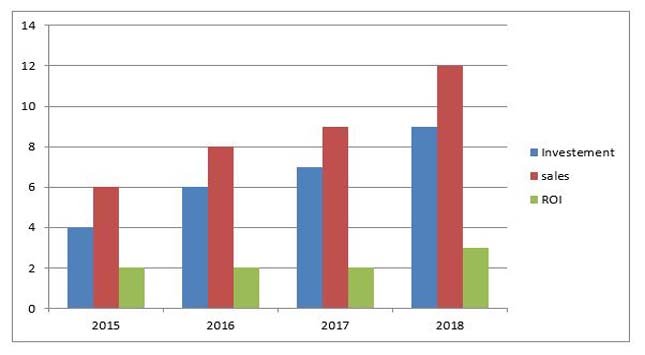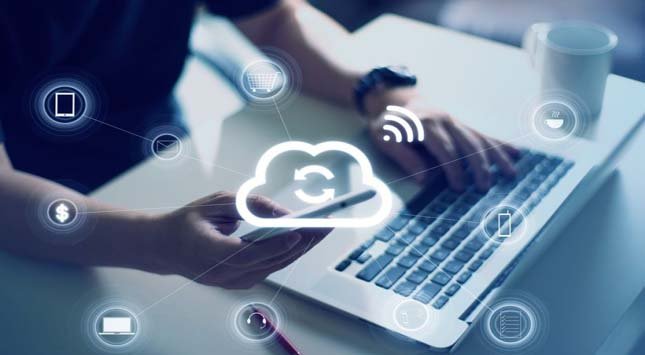A popular winemaker puts a small square bar code on each bottle. A shopper can scan that bar code with his smartphone and view a video of exactly how that wine was produced from the vine through the bottling and aging process.
Likewise, restaurants are now embedding bar codes by their top items, so that patrons can view a video of the chef in the kitchen preparing that dish.
Other product bar codes provide important information for consumers as they shop on the shelves. The marketing goal is to engage consumers more personally with a product and thus increase sales. And it does work.
These little squares are called quick-response (QR) codes. And using them as marketing tools is now not their only purpose. Businesses and organizations are discovering all kinds of ways in which these QR codes can be useful.
They can be placed around the office to provide important announcements to employees, and these codes can be used to instantly take an employee to videos that provide updates and training.
One sector that has begun to make a lot of use of QR codes is education, especially at the college level, where instructors and administrators have found many uses for them, taking the lead from the business sector. Here are some examples of the rising use of QR codes.
1. Health and Safety in a COVID World
The threat of COVID-19 infection exists wherever groups of people gather – in the workplace, in business establishments, in restaurants, and, yes, even in schools.
Exactly how QR codes can support the reduction of spread has now been recognized and coming to be used more and more frequently. Consider all that a QR code can do:
- Employees, shoppers, diners, and students can all be met with a QR code entry requirement. Upon scanning the code with their smartphone, the entrant must answer specific questions – email address, phone number, recent travel, symptoms of illness, and more. Answering these questions will then allow or disallow entry, thus protecting those already inside.
- Having email addresses and phone numbers will allow contact tracing. Suppose someone in the facility develops COVID. Having the ability to contact everyone else who was in the facility at the same time as that ill person can alert them to get tested themselves. Contact tracing has been a key factor in those countries, such as Singapore, that have managed to slow and significantly reduce the spread of this disease better than countries that do not have the same QR coding system in place.
- In the case of schools specifically, knowing which students have been where on campus will allow immediate notification of their exposure and the need to be tested. Clinics on campus can provide quick and easy access to such tests and monitoring of those students who have followed through as directed.
Using the services of QR code developers will allow governments, businesses, retailers, organizations, and schools to have customized codes for their individual needs.
Schools have also found many other uses for QR codes.
2. Provide Access to Educational Materials
When professors need to present students with supplementary materials not found in the texts, they use QR codes to direct students to those materials – videos, images, content, e-journals, etc. Students could be given those URLs, of course, but using the code is much more efficient, especially since the majority now use their smartphones to access and absorb information.
Marie Fincher, an Editor for Trust My Paper writing service, is sold on this use of QR codes: “We have students with specific resource requirements when they need assistance with their research papers and projects. When they can provide QR codes for these resources, our researchers and writers can access them quickly without having to search for them. This speeds up the entire process, and our clients are better served.”
3. Manage Library Resources
This has become one of the best uses of QR codes that will speed up the entire process of locating resource materials. Students can access a QR code from their smartphones that will take them to the entire library database.
QR codes are also being used to provide summaries, annotations, and reviews of individual books. Still, another use is for library personnel, who can use QR codes to manage their inventories.
4. Disseminating Campus News
Most colleges and universities have a newsletter publication, and administrators have the information they need to get out to the entire student body as well. Both of these needs can be met with QR codes.
When a student newsletter is published online (as most are today), rather than publish entire articles, they can post headlines or short teasers, along with a QR code that will take readers to the full article, if they wish, or to skip and move on faster.
There are times when announcements to the entire study body must be made. While most universities have a text messaging system in place, this requires that students pick up those messages and read them. If those announcements are also included via QR codes, strategically placed throughout a campus, students can access that information through a simple scan.
5. Making Classes More Engaging and Interactive
It is one thing for students to read course material from their texts. This is not the most exciting activity. But, when instructors can find related images and videos to go along with the content, they can engage students in far better ways.
And because brains take in visual content about 60K times faster than the printed word, as well as retain that information better, using QR codes to direct them to those images and videos provides a far more meaningful and engaging experience.
6. Campus Tours and Orientation
High school students visit campuses of colleges they are considering. Many colleges and universities use human student guides, but this is becoming rarer now, especially during our COVID crisis. Using QR codes can direct potential students to virtual tours of campuses.
This is particularly helpful for students who cannot physically visit. However, if they are physically visiting, such codes can be used at specific points of interest, giving students valuable information and details.
7. Health and Fitness
College students are becoming far more aware of the need to eat right and stay fit. Many are specifically concerned with their diets, especially when eating in campus dining halls. They want details about the ingredients in their foods as well as other dietary information such as grams of sugar, fat, sodium, and protein.
QR codes can be used to provide this information for all menu items. This is also valuable for students who have allergies or specific dietary needs.
If students use the campus fitness center, they will want information about the equipment they are using – what muscles are being targeted, for example. When there are QR codes on each machine for easy scanning, students will have the information they want as they make their choices about which machines will benefit them most.
8. Applicant Material
Students who apply to colleges and universities have to complete applications. And they have to craft at least one essay, based on prompts that are provided by the college. One of the more recent innovations of some colleges has been to provide QR codes of “winning” essays, providing applicants with some information about how they might want to fashion their essays.
Bill Bradley, a freelance creative writer for Wowgrade and Supreme Dissertations, often helps students with their application essays. “Every institution is unique. What one admissions committee finds exceptional, another may not.
Having examples of what admissions committees are looking for in responses to their prompts helps me assist applicants with their essays. And when they can provide me with QR codes that demonstrate the “winners,” I can help with content, style, and tone.”
9. Events
There are always events, even in these times of COVID. Virtual concerts, athletic competitions, conferences, workshops, etc. still go on. And there may still be fees, although reduced, to “enter” these virtual events. QR codes can not only provide access information but can provide discount coupons and other rewards for attendees.
The Wrap…
The value of QR codes has already been established. How schools, businesses, and organizations use them now and in the future points to almost unlimited possibilities. They provide quick and easy access to information, entertainment, education, resources, and more.
Any enterprise that fails to take advantage of its use will find itself less popular with its target audience – an audience that, in today’s world demands immediate access.






